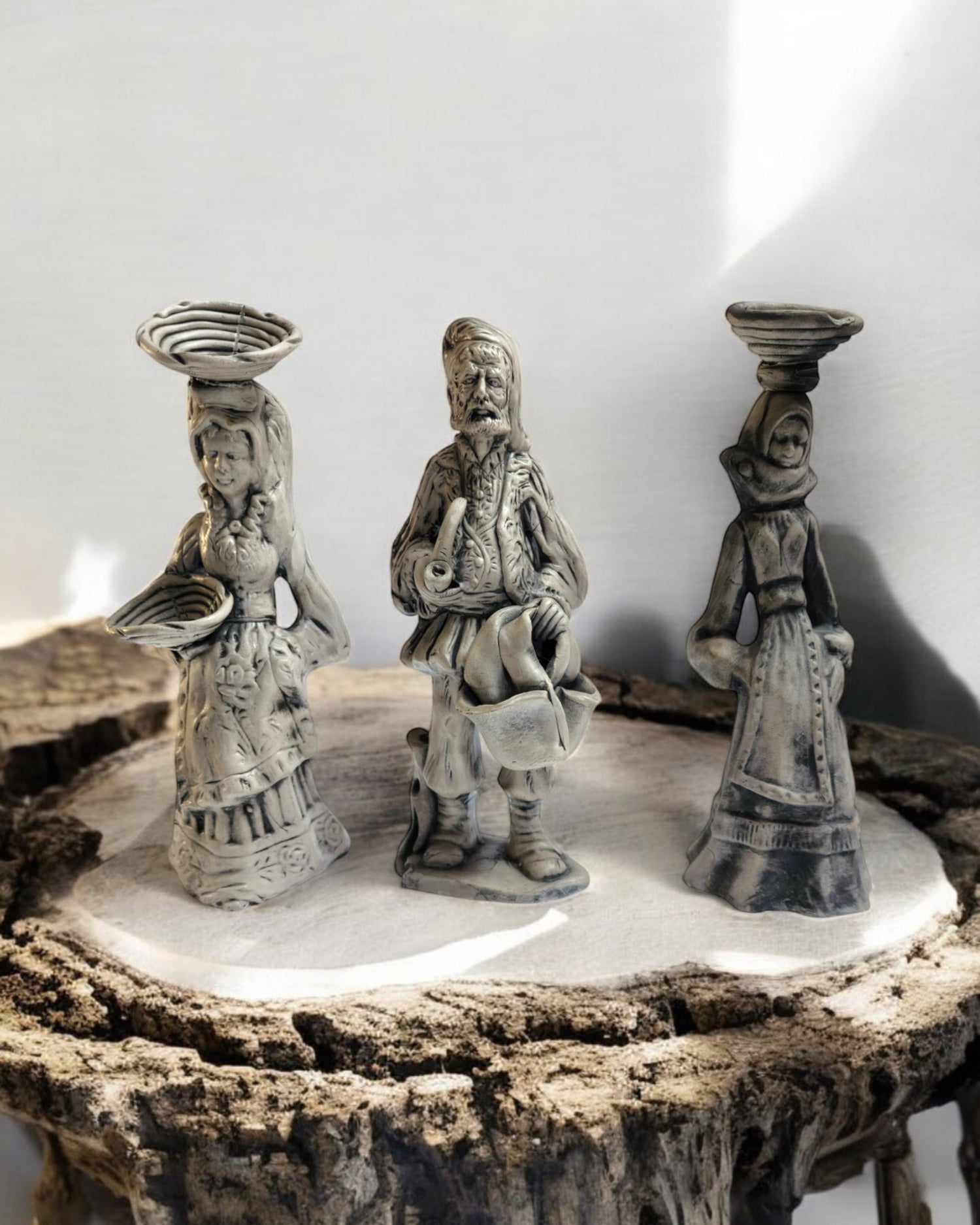
A Guide to Antique Furniture in Italy
Share
Antique furniture holds a special place in the hearts of collectors and enthusiasts. Italy, with its rich history and tradition of craftsmanship, offers some of the most exquisite and sought-after antique furniture pieces in the world. From the opulent designs of the Baroque period to the elegant simplicity of Neoclassical styles, Italian antique furniture reflects the country's artistic heritage and cultural evolution. This guide delves into the various styles, craftsmanship, and tips for collecting and caring for Italian antique furniture.
Renaissance Furniture
The Renaissance period, known for its cultural revival and artistic achievements, also influenced furniture design. Renaissance furniture is characterized by its elaborate carvings, use of high-quality materials, and intricate motifs. Pieces such as cabinets, tables, and chairs often feature classical themes, including mythological figures, floral patterns, and geometric designs. The craftsmanship of Renaissance furniture showcases the skill and creativity of Italian artisans, making these pieces highly prized by collectors.
Baroque Furniture
Baroque furniture, which emerged in the 17th century, is known for its grandeur and dramatic designs. This style often incorporates bold, intricate carvings, gilded details, and luxurious fabrics. Baroque furniture pieces, such as armchairs, commodes, and mirrors, are often large and imposing, reflecting the opulence and extravagance of the period. The use of rich woods, such as walnut and mahogany, along with elaborate decorations, makes Baroque furniture stand out as a symbol of wealth and status.
Rococo Furniture
The Rococo period, which followed the Baroque era in the early 18th century, introduced a lighter, more playful style of furniture. Rococo furniture is characterized by its asymmetrical designs, delicate curves, and intricate ornamentation. Common motifs include shells, flowers, and scrolls, often rendered in a whimsical and elegant manner. The use of pastel colors and fine upholstery fabrics further enhances the charm of Rococo furniture, making it a favorite among collectors who appreciate its romantic and fanciful aesthetic.
Neoclassical Furniture
Inspired by the classical art and architecture of ancient Rome and Greece, Neoclassical furniture emerged in the late 18th century. This style is known for its clean lines, geometric forms, and use of classical motifs such as columns, urns, and laurel wreaths. Neoclassical furniture emphasizes symmetry and proportion, creating a sense of harmony and elegance. Popular pieces include sideboards, consoles, and writing desks, often made from high-quality woods and adorned with inlays and marquetry.
Empire Furniture
The Empire style, which became popular during the early 19th century, is closely associated with the reign of Napoleon Bonaparte. Empire furniture is characterized by its bold, symmetrical designs and use of imperial motifs such as eagles, laurel wreaths, and stars. The use of dark woods, such as mahogany and ebony, along with gilded accents, gives Empire furniture a sense of grandeur and authority. Key pieces include sleigh beds, chests of drawers, and armoires, which are often large and imposing.
Venetian Furniture
Venetian furniture, particularly from the 18th century, is known for its elaborate decoration and use of vibrant colors. Pieces such as chests, chairs, and mirrors often feature intricate painted scenes, gilded accents, and ornate carvings. The influence of Venice's rich artistic and cultural heritage is evident in the craftsmanship and design of Venetian furniture. Collectors highly prize these pieces for their unique beauty and artistic value.
Florentine Furniture
Florentine furniture, especially from the Renaissance and Baroque periods, is renowned for its intricate carvings and use of luxurious materials. Pieces such as tables, cabinets, and picture frames often feature detailed inlays, gilding, and painted decorations. The craftsmanship of Florentine furniture reflects the city's rich artistic tradition and its role as a center of art and culture. These pieces are valued for their historical significance and exquisite beauty.
Sicilian Furniture
Sicilian furniture, influenced by the island's diverse cultural heritage, often features a blend of styles and techniques. Pieces such as beds, wardrobes, and chairs are known for their robust construction and use of local woods. Sicilian furniture may incorporate elements of Baroque, Rococo, and Neoclassical styles, reflecting the island's unique artistic identity. Collectors appreciate these pieces for their distinctive character and craftsmanship.
Materials and Techniques
The quality of materials and techniques used in Italian antique furniture is a testament to the skill of its craftsmen. Italian furniture makers often used high-quality woods such as walnut, cherry, and mahogany, known for their durability and beauty. Techniques such as marquetry, inlay, and gilding were employed to enhance the aesthetic appeal of furniture pieces. These methods require precision and artistry, contributing to the timeless beauty and value of Italian antique furniture.
Collecting Italian Antique Furniture
When collecting Italian antique furniture, it's important to consider factors such as provenance, condition, and authenticity. Provenance refers to the history of ownership and can add significant value to a piece. The condition of the furniture should be carefully assessed, looking for signs of damage or restoration. Authenticity is crucial, as reproductions can often be mistaken for genuine antiques. Consulting with experts or reputable dealers can help ensure that you are purchasing authentic and valuable pieces.
Preserving and Caring for Antique Furniture
Proper care and preservation are essential for maintaining the beauty and value of antique furniture. This involves protecting the furniture from environmental factors such as humidity, sunlight, and pests. Regular cleaning and maintenance, using appropriate products and techniques, can help preserve the integrity of the materials. It's also important to handle antique furniture with care, avoiding excessive movement or pressure on delicate parts.
Conclusion
Italian antique furniture offers a fascinating glimpse into the country's rich artistic and cultural heritage. From the opulence of Baroque designs to the elegant simplicity of Neoclassical styles, each piece reflects the skill and creativity of Italian craftsmen. Collecting and preserving these antiques allows us to appreciate their beauty and historical significance, connecting us to the past in a tangible and meaningful way. Whether you're an experienced collector or new to the world of antiques, Italian furniture provides an enduring source of inspiration and admiration.

